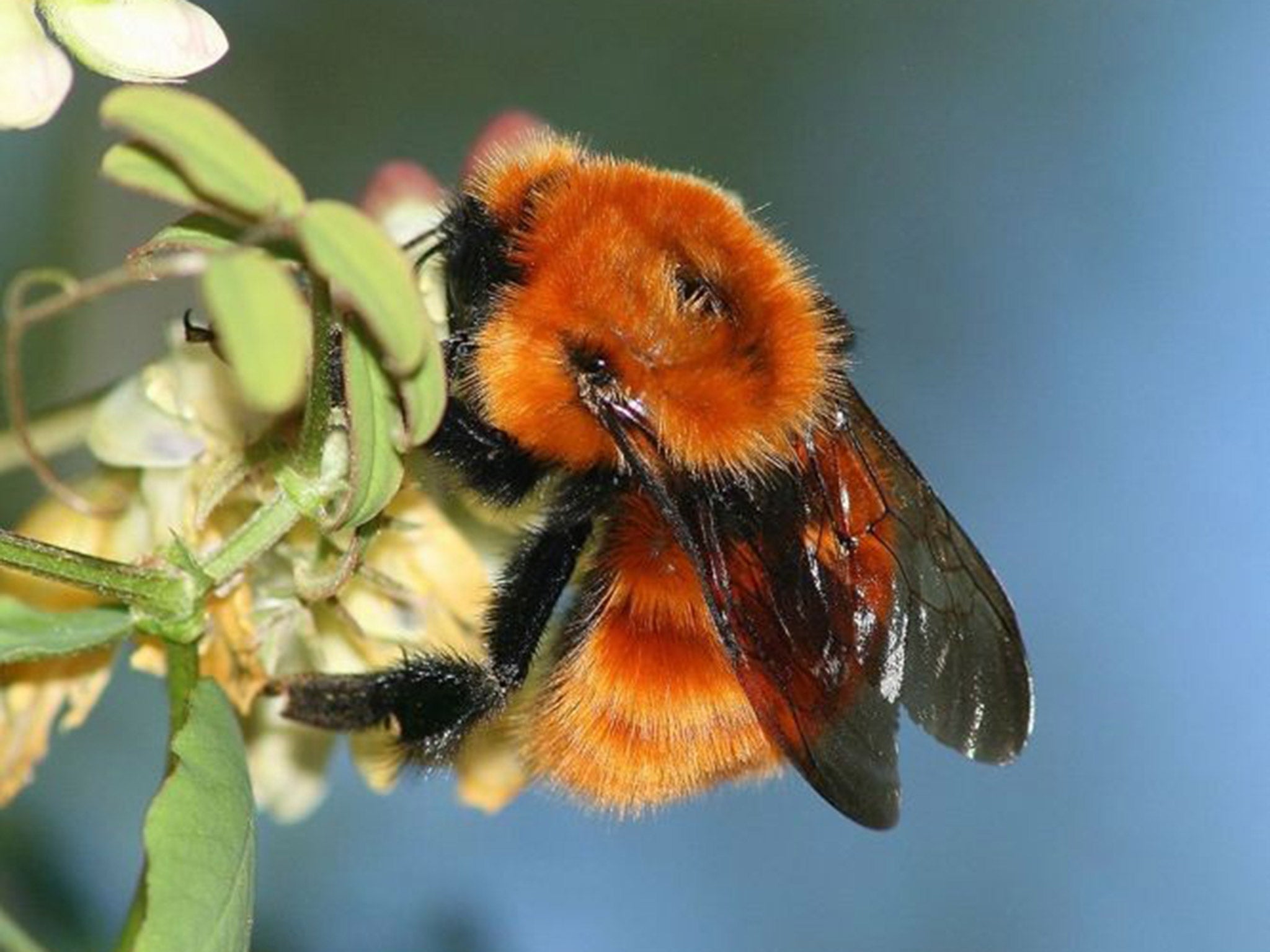Bye bye big bee: In South America, the world's largest bumblebee is at risk from imported rivals
Grim echo of when European humans first arrived in the Americas and infection killed millions of the indigenous inhabitants

Your support helps us to tell the story
From reproductive rights to climate change to Big Tech, The Independent is on the ground when the story is developing. Whether it's investigating the financials of Elon Musk's pro-Trump PAC or producing our latest documentary, 'The A Word', which shines a light on the American women fighting for reproductive rights, we know how important it is to parse out the facts from the messaging.
At such a critical moment in US history, we need reporters on the ground. Your donation allows us to keep sending journalists to speak to both sides of the story.
The Independent is trusted by Americans across the entire political spectrum. And unlike many other quality news outlets, we choose not to lock Americans out of our reporting and analysis with paywalls. We believe quality journalism should be available to everyone, paid for by those who can afford it.
Your support makes all the difference.It is believed to be the largest in the world – with queens likened to "flying mice". But a bumblebee once common in South America is heading for extinction, scientists fear, as European invaders mass on the doorstep of its last known stronghold.
Bombus dahlbomii – described by British scientist Dave Goulson as "a monstrous fluffy ginger beast" in his best-selling book A Sting in the Tale – has almost disappeared since a buff-tailed bumblebee was imported into Chile in the mid-1990s.
Experts believe it is likely the buff-tails brought diseases to which dahlbomii has no resistance, in a grim echo of what happened when European humans first arrived in the Americas and infection killed millions of the indigenous inhabitants.
Tierra del Fuego, off the southern tip of South America, is the last place where dahlbomii has been seen in any numbers, but activists are reporting that its nemesis is now commonly to be found in the wild on the northern shore of the Magellan Strait, which separates the archipelago from the mainland.
Professor Goulson, of Sussex University, said the buff-tails would be across the strait "in no time" and once there it was "very likely the end" of dahlbomii.
"It's pretty tragic. Nothing anyone can do about it. It shows what a mess we can make of things," he said. "They [dahlbomii] were certainly around last year in abundance in Tierra del Fuego, but with buff-tails arriving, that's probably the end of them."
In 2012, he travelled through Chile looking for the "legendary" giant bumblebee to no avail. "We just saw an awful lot of buff-tailed bumblebees. We didn't get far enough south," said Professor Goulson. "I am sad because I will never get to see the world's biggest bumblebee, having missed my chance … and I think it's really sad nobody else will. We lose species all the time … that whole process is depressing."
The dahlbomii queens can grow to about 4cm long. "I have friends who have seen them who've described them as looking like flying mice," Professor Goulson said, before admitting this was "stretching it slightly".
Professor Jose Montalva, of the Save Our Bees group in Chile, said buff-tailed bumblebees had been brought to Punta Arenas on the Magellan Strait two years ago to pollinate greenhouse crops, but they had since escaped into the wild.
"It is commonly seen in Punta Arenas and around this south part," he said, adding they would probably cross the strait next summer or the year after. "It's very bad. When Bombus terrestris arrived in this area, the dahlbomii disappeared in five or six years."
There is a worldwide trade in artificially reared bumblebees, which are used to pollinate a host of crops, including tomatoes, strawberries and avocados. But buff-tails' astonishing success – spreading at the rate of 200km a year at the expense of their native rival and the many flowers pollinated by it – is a cautionary tale about the harmful effects of introducing alien species.
Join our commenting forum
Join thought-provoking conversations, follow other Independent readers and see their replies
Comments